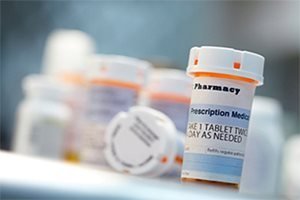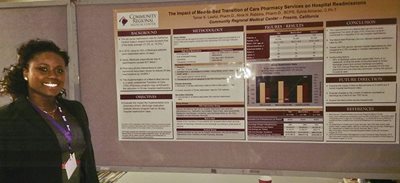 We’d love to see Mr. Frequent Flyer enjoying life instead.
We’d love to see Mr. Frequent Flyer enjoying life instead.But Mr. Flyer is on 12 medications, some of which he does not take regularly due to cost. He has both medical and prescription coverage; however, some of his prescribed medications for his chronic conditions are not covered by his insurance provider. Additionally, due to his multiple diseases, there are medications he has been taking which may worsen his medical conditions and are likely to contribute to his hospital readmissions.
Mr. Flyer’s situation may seem extreme; however, it is more common than you may think. Hospital readmissions within 30 days of discharge can be linked to common medication related problems such as: 1) unfilled prescriptions, 2) lack of knowledge about medications, and 3) adverse drug effects or interactions. Pharmacy-driven interventions during the patient’s transition from the hospital to home have been shown to decrease 30-day readmissions to the hospital and improve the patient’s health.
Having seen the studies on this, I made it my goal as a hospital pharmacist to assist the healthcare team in reducing hospital readmissions with ideas on how to implement a Transitions of Care (TOC) Pharmacy program at Community Regional. My hope was it would also enhance the hospital experience for patients.
Pharmacy driven interventions in TOC include things like:
- Creating an up-to-date medication list for the patient
- Making follow-up calls after discharge
- Medication counseling
- And communicating with primary care physicians after a patient returns home to address concerns about medications.
At Community Regional we used multiple interventions to reduce the number of Mr. Flyers we’d see back in a hospital bed. First we did medication reconciliation, looking at the patient’s home list of medications to check that all doses and instructions were right and to make sure the patient was really taking the medication before coming to the hospital. Then we met with the discharge team and provided recommendations for adjustments in medication dosage or type. After that, we made sure the patient had counseling on the importance of taking medications in a certain way and that physician appointments were scheduled for any needed follow ups. We also did discharge follow-up calls and started a Med-to-Bed service, with the support of the Community Regional Pharmacy Management team, the University Medical Center Pharmacy (aka Ambulatory Care Center Pharmacy), and the Cardiac Progressive Care Unit (CPCU) staff.
I’m so excited about how our new Med-to-Bed program has lowered the number of patients returning to the hospital after discharge – by nearly 30%! Patients who accepted the offer to be part of the Med-to-Bed service were provided with their discharge medications before leaving the hospital instead of having to make a separate visit to a pharmacy during their recuperation. These patients were also given more education on their disease states; counseled on the appropriate use of their medications; and received a follow-up call from the TOC Pharmacy 5-7 days after discharge. The goals of the Med-to-Bed program are to improve patient health by educating them and getting them to take their medication more appropriately and reduce hospital readmissions. Med-to-Bed patients were identified as being at high risk for hospital readmission based on their age, number of chronic medications prior to being hospitalized and being on high risk medications like warfarin, which can cause someone to bleed easily.
 |
| Pharmacist Tamar K. Lawful presents her findings on the Med-to-Bed pilot program with cardiac patients at the California Pharmacists Association West Coast Exchange Conference in San Francisco. |
Managing the TOC Pharmacy and developing the Med-to-Bed program have been extremely rewarding. Patients like Mr. Flyer are able to leave the hospital with an optimal medication regimen; affordable medications; new found knowledge of and understanding about their medications and illnesses; and a renewed resolve to better manage their health. The icing on the cake for me is the unexpected phone calls of gratitude I receive from patients.
Tamar K. Lawful, PharmD
Transitions of Care Clinical Pharmacist
Community Regional Medical Center


